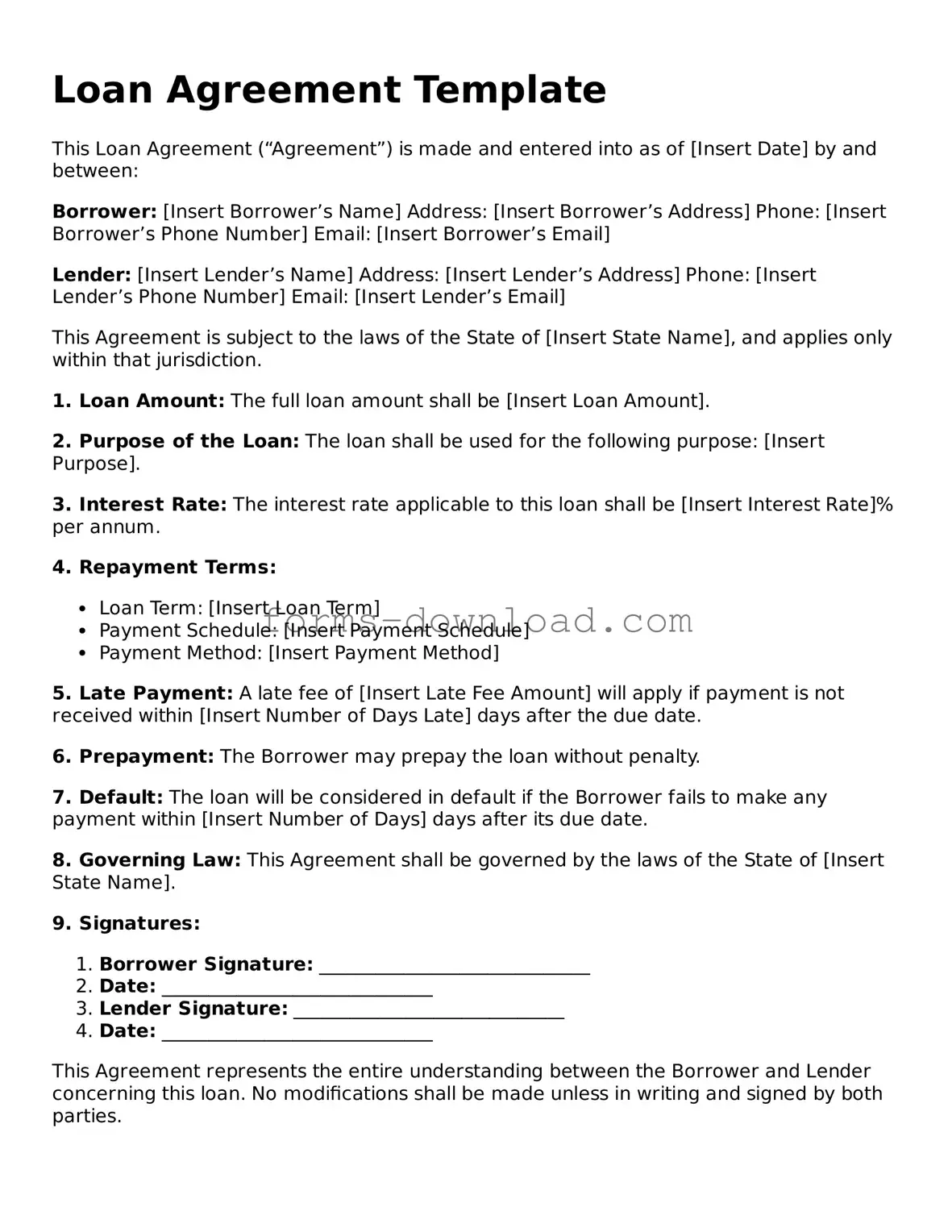Loan Agreement Template
This Loan Agreement (“Agreement”) is made and entered into as of [Insert Date] by and between:
Borrower: [Insert Borrower’s Name]
Address: [Insert Borrower’s Address]
Phone: [Insert Borrower’s Phone Number]
Email: [Insert Borrower’s Email]
Lender: [Insert Lender’s Name]
Address: [Insert Lender’s Address]
Phone: [Insert Lender’s Phone Number]
Email: [Insert Lender’s Email]
This Agreement is subject to the laws of the State of [Insert State Name], and applies only within that jurisdiction.
1. Loan Amount: The full loan amount shall be [Insert Loan Amount].
2. Purpose of the Loan: The loan shall be used for the following purpose: [Insert Purpose].
3. Interest Rate: The interest rate applicable to this loan shall be [Insert Interest Rate]% per annum.
4. Repayment Terms:
- Loan Term: [Insert Loan Term]
- Payment Schedule: [Insert Payment Schedule]
- Payment Method: [Insert Payment Method]
5. Late Payment: A late fee of [Insert Late Fee Amount] will apply if payment is not received within [Insert Number of Days Late] days after the due date.
6. Prepayment: The Borrower may prepay the loan without penalty.
7. Default: The loan will be considered in default if the Borrower fails to make any payment within [Insert Number of Days] days after its due date.
8. Governing Law: This Agreement shall be governed by the laws of the State of [Insert State Name].
9. Signatures:
- Borrower Signature: _____________________________
- Date: _____________________________
- Lender Signature: _____________________________
- Date: _____________________________
This Agreement represents the entire understanding between the Borrower and Lender concerning this loan. No modifications shall be made unless in writing and signed by both parties.
